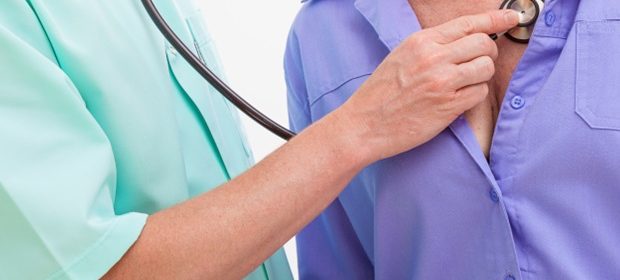Lymphadenopathy Management

Lymphadenopathy is the term used to describe enlargement of the lymph nodes, the bean-shaped glands found in the neck, groin, armpits, abdomen, and chest. The nodes filter lymphatic fluid as it flows through the body to reach the venous circulation.
The lymphatic fluid is made up of plasma, cells, antigens, and foreign particles that move from the interstitial space into the lymphatic vessels. Filtering of the fluid by the lymph nodes removes cells and other materials, but also presents antigens to lymphocytes present inside the nodes. In response, cells in the nodes proliferate, which can cause them to enlarge. Microorganisms in the fluid can directly infect nodes, causing them to inflame (lymphadenitis) and cancer cells can also lodge in the nodes and proliferate. Many infections, inflammatory disorders and cancers can potentially cause lymphadenopathy, but the most common causes are relatively harmless, local soft tissue infections and upper respiratory infections. Less than 1% of cases are caused by cancer.
Since lymph nodes that have become enlarged are often located close to the site of infection, identifying their location can help to determine what is causing the enlargement. An infection in the mouth or teeth, for example, may cause lymph nodes in the jaw area to enlarge, while a throat infection may cause enlarged nodes in the back of the neck. Lymph nodes may also be affected throughout the body, as is the case with mononucleosis or chickenpox.
Evaluation and Diagnosis
A doctor determines the location of the adenopathy, how long it has lasted and whether or not it is accompanied by pain. Lymph node enlargement is defined as a node size of more than 1 cm. The patient is assessed for any symptoms of potential causes. For example, a runny and congested nose may indicate an upper respiratory tract infection, while tooth or gum pain may indicate a dental infection.
The patient’s medical history is assessed to identify any risk factors for STD infection or cancer and the patient is asked about contact with anyone who has been ill. The patient’s travel history is also assessed to identify any possible exposure to endemic infections. Potential exposure to infection through contact with animal feces or wild animals is also evaluated. The size, tenderness, mobility, and consistency of the nodes are noted and the skin is inspected for rashes and lesions, particularly in areas that are drained by any affected nodes.
Interpretation
Patients with adenopathy throughout the body usually have a systemic condition, while those with localized adenopathy may have either a systemic condition or a localized disorder. The cause can sometimes be identified when a patient clearly has a condition such as a viral urinary tract infection or a dental infection. In other cases, the findings do not point to a single cause.
When nodes are markedly enlarged (more than 2 cm), firm and/or do not move, cancer is considered a possibility, particularly if the patient has used tobacco and/or alcohol on a prolonged basis. Marked tenderness, redness, and warmth of one enlarged node may be caused by an infection that involves the production of pus (suppurative infection) such as streptococcus or staphylococcus.
If the patient has a malignant, infectious, or connective tissue disorder, the adenopathy is often accompanied by a fever. In cases of mononucleosis, leukemia, and lymphoma, the spleen may be enlarged. In cases of TB or cancer, the patient may have lost weight. However, the condition may still have a serious cause even when patients do not present with any other symptoms of illness.
Testing
If a particular disorder is suspected, testing is performed to check for that condition. If the patient’s medical history and findings after physical examination do not point to any particular cause, further tests are performed based on which nodes are involved and the other findings present. Examples of tests that may be carried out include the following:
- Laboratory tests: A complete blood count to check the number of red blood cells, white blood cells and blood clotting cells. Urine tests and other types of blood test may also be performed.
- Chest X-ray: Images of the chest are taken to check for lymph node enlargement or other problems.
Most clinicians think that if adenopathy is localized and there are no other findings, then the patient can safely be watched for three to four weeks, unless cancer is a possibility. If cancer is suspected, a biopsy of lymph node tissue is taken and sent for microscopic analysis in a laboratory. A biopsy is also taken if the adenopathy does not resolve after three to four weeks.
Treatment
Initial treatment is directed at the cause of the adenopathy rather than the adenopathy itself. Corticosteroids are not used to treat adenopathy with no identifiable cause, since these drugs can reduce the size of enlarged lymph nodes that are caused by cancer or lymphoma and they therefore delay diagnosis. Antibiotics are also not prescribed, unless the cause is thought to be a suppurative infection of the lymph nodes.
Sources
- www.cancerresearchuk.org/…/what-is-lymphadenopathy
- www.msdmanuals.com/…/lymphadenopathy
- www.urmc.rochester.edu/…/content.aspx
- www.cancerresearchuk.org/…/what-is-lymphadenopathy
- www.melbournehaematology.com.au/fact-sheets/lymphadenopathy.html
Further Reading
- All Lymphadenopathy Content
- What is Lymphadenopathy?
Last Updated: Feb 27, 2019

Written by
Sally Robertson
Sally has a Bachelor's Degree in Biomedical Sciences (B.Sc.). She is a specialist in reviewing and summarising the latest findings across all areas of medicine covered in major, high-impact, world-leading international medical journals, international press conferences and bulletins from governmental agencies and regulatory bodies. At News-Medical, Sally generates daily news features, life science articles and interview coverage.
Source: Read Full Article